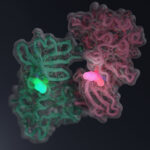The first flow cytometer in the southern hemisphere, the FACS II, was introduced here at WEHI in 1977. Since then flow cytometry technology has continued to advance and is now a key resource for researchers.
Flow cytometry is widely used at WEHI where researchers often need to profile samples containing mixtures of cells. For example:
- Immunology researchers use flow cytometry to identify, separate and define various immune cell subtypes by their size and structural characteristics.
- Researchers using CRISPR/Cas9 genome editing technology tag edited genes with fluorescent proteins, allowing cells to be detected and separated by flow cytometry.
WEHI’s flow cytometry resources are also available for external use. Contact Simon Monard for further information.







